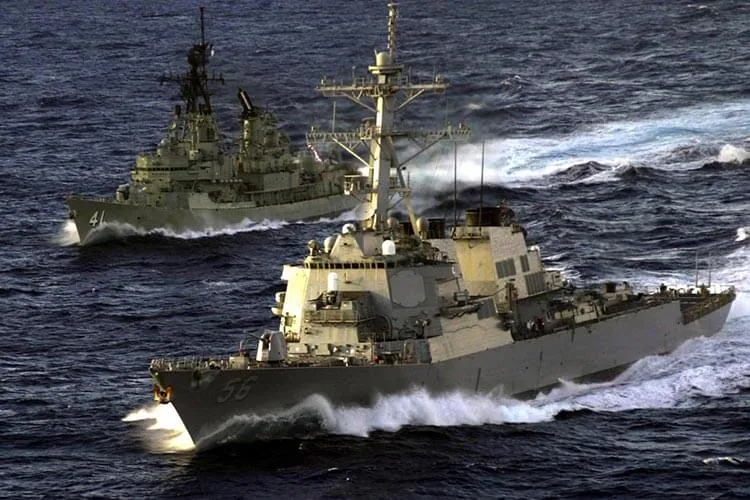In the late 2000s, military experts began highlighting the importance of standardizing modular architectures in defense technologies. In 2016, Congress mandated that all U.S. defense acquisition programs implement Modular Open Systems Approach (MOSA) into their design processes. MOSA is critical to future defense and aerospace development, as it improves the interoperability, flexibility, and cost-effectiveness of complex military systems.
Learn more about MOSA and the advantages of modular systems in the military industry.
MOSA
MOSA is a development methodology that emphasizes the creation and implementation of systems with interchangeable, modular components, particularly commercial off-the-shelf (COTS) products.
COTS Products and MOSA
A key element of MOSA is the use of commercial off-the-shelf military products. These ready-made products are immediately available and meet many of the military’s stringent requirements. Choosing COTS solutions accelerates technology integration, lowers costs, and allows developers to focus on building advanced systems without reinventing the wheel.
For example, ruggedized COTS products can serve in avionics systems, mission computers, communication platforms, and other critical military embedded systems as long as they meet certain qualifying standards. Selecting the right supplier is crucial to making sure the products meet the demanding standards of military use.
MOSA Implementation Example
Imagine an aging fleet of fighter jets with outdated avionics systems. As military embedded systems become obsolete, maintaining them grows increasingly difficult and costly. By adopting MOSA principles, developers can implement modular upgrades that simplify maintenance and extend the fleet’s operational lifespan.
Key modular upgrades might include:
- Radar systems: enhanced detection and tracking capabilities
- Navigation systems: improved precision for mission-critical operations
- Communication systems: modernized for secure and efficient data exchange
- Electronic warfare systems: updated to counter emerging threats
Each module is designed with open standards, allowing seamless integration and interoperability. This approach reduces costs and provides the flexibility to adapt to future technological advancements, aligning with modern military needs.
SOSA
Sensor Open Systems Architecture (SOSA) is a set of guidelines designed to align with MOSA principles, promoting compatibility and efficiency in sensor design. By reducing the complexity of standards like OpenVPX, SOSA enables developers to create systems that are easier to build, maintain, and upgrade.
How SOSA Works
SOSA provides a framework for designing modular systems without dictating specific designs. Instead, it standardizes elements like slot profiles and pin configurations, providing compatibility across components. This approach benefits developers by offering:
- Flexibility: Systems can incorporate components from multiple manufacturers, allowing integrators to choose the best solutions for their needs.
- Interchangeability: Standardized modules simplify upgrades and repairs, saving time and resources.
- Rapid Innovation: With readily available COTS building blocks like single-board computers (SBCs), switches, and transceivers, system integrators can quickly develop radar and electronic warfare systems.
By aligning new designs with SOSA, military developers can harness the benefits of MOSA while guaranteeing compatibility and scalability for future advancements.
Advantages of Modular Systems
The combination of MOSA and SOSA offers significant advantages for defense development, streamlining the design and maintenance of military systems in the following ways.
Efficiency
MOSA’s modular approach simplifies development and integration as military systems grow more complex. Different vendors can design various subsystems, but they can still be integrated into a single system. This reduces redundancy, speeds up development, and lowers overall costs.
Supply Chain Resilience
MOSA allows defense system developers to diversify their supply chain so that they are not dependent solely on one vendor. Supply chain resilience and operational continuity are vital to mission-critical defense systems.
Keeping Equipment Up-to-Date
Technology evolves quickly, and MOSA enables the military to keep pace. Modular systems extend the life of equipment by allowing easy upgrades and replacements, guaranteeing warfighters have access to the latest technology.
Flexibility
The philosophy of MOSA is adaptability. Systems can be updated or modified without starting from scratch, allowing developers to incorporate new technologies or adjust existing designs as needed. This iterative approach guarantees that military systems remain relevant and practical, even as requirements evolve.
Interoperability
A modular approach supports platform interoperability, meaning that an army platform can work on a marine platform, for example. MOSA also enables separate hardware and software modules to be changed independently without disrupting operations.
How Daisy Data Displays’ COTS Computers Support MOSA Systems
Daisy Data Displays engineers ruggedized COTS computers specifically designed to embrace MOSA principles across airborne, shipboard, and ground control applications. Our approach centers on open standards architecture and deliberately avoids proprietary components, ensuring seamless integration with diverse military systems and maximizing interoperability.
As a software-agnostic solution provider, our hardware platforms support various operating systems and software environments, giving defense integrators complete flexibility in their implementation choices. Each product is engineered with modular hardware components and standardized interfaces that can be readily adapted and customized to mission-specific requirements without extensive redesign.
This adaptability extends throughout the product lifecycle—when computing needs inevitably evolve, our systems can be efficiently upgraded with enhanced processors, memory, storage, or I/O capabilities rather than requiring complete replacement. This forward-compatible design philosophy significantly reduces total ownership costs while providing warfighters with continued access to cutting-edge technology.
By optimizing for size, weight, power, and cost (SWaP-C) considerations, our MOSA-compliant solutions deliver the robust processing power, reliability, and durability demanded by today’s increasingly complex defense environments.
Learn More About MOSA and Rugged Computer Products
For over 40 years, Daisy Data Displays has supported the defense industry with rugged, reliable computers made in the USA. Our ISO 9001:2015-certified facility and customer-focused approach guarantee that every product is engineered and manufactured to the highest standards. Our ruggedized computers meet MOSA requirements and are designed to prolong equipment lifespan.
Request a quote or contact us today to learn more about how our solutions can support your defense or aerospace project.

